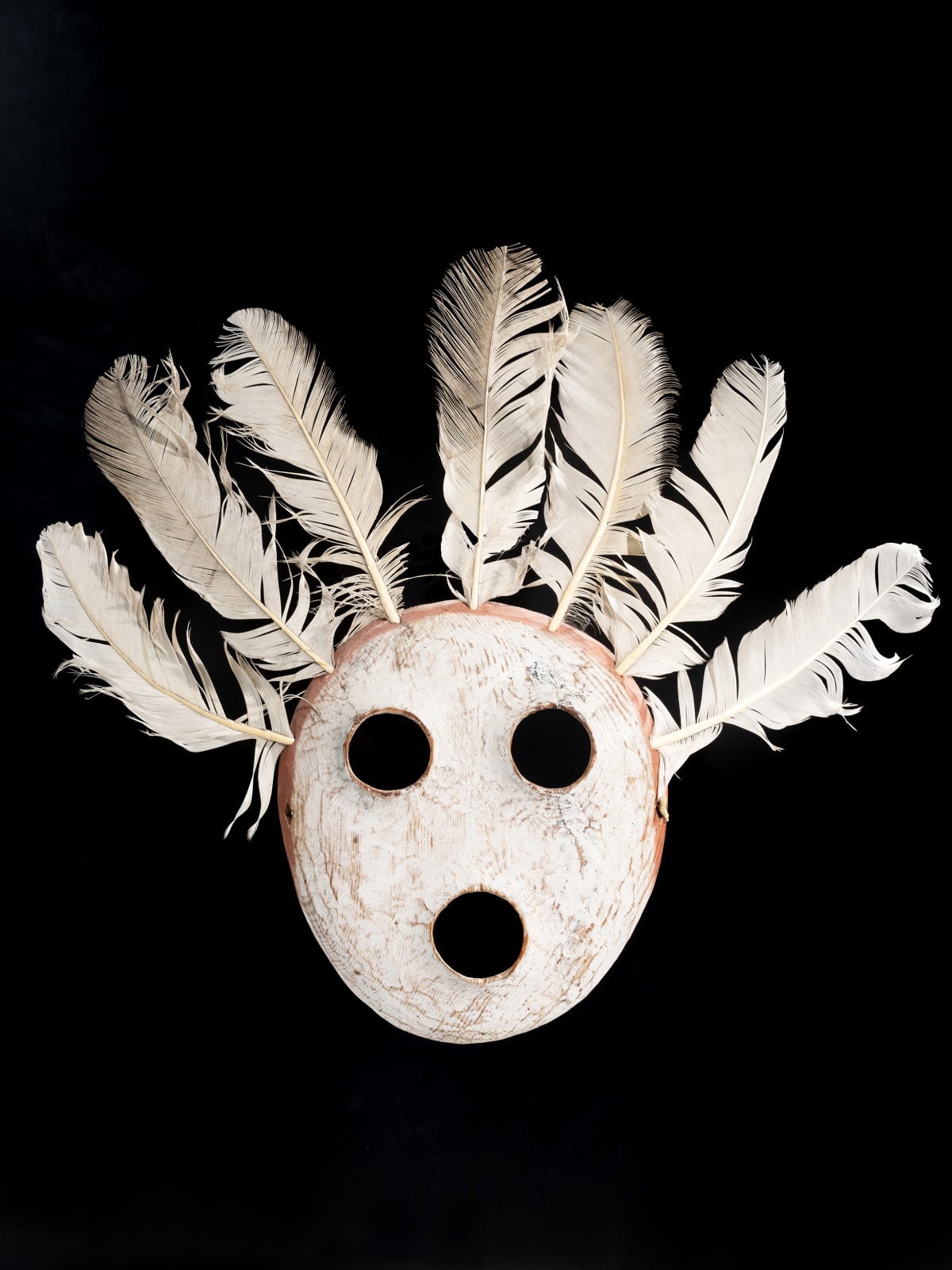Anonymous artist
Yupik Mask
Wood, feathers
Origin: Alaska
Origin: Alaska
height 27 cm
height 10 5/8 in
height 10 5/8 in
Duende Art Projects
Photo: Valentin Clavairolles
Sold
Further images
For the Yupik people of southwestern Alaska, masked dancing has long been a focal point of ceremonial activity. Performed traditionally inside the communal men’s house during festivals, the dances featured...
For the Yupik people of southwestern Alaska, masked dancing has long been a focal point of ceremonial activity. Performed traditionally inside the communal men’s house during festivals, the dances featured face and finger masks that made visible the world of the spirits and extraordinary beings and were specially made to tell particular stories. Each mask was unique, created as a tangible manifestation of a shaman’s vision to bring the unseen or unknowable into a solid form. Yupik cosmology revolves around the close relationship between human society and the spirit world. The present mask would have likely been performed during the winter ceremonial season, when the souls of animal spirits were thanked for willingly offering their bodies to hunters. Yupik masks were used by shamans to facilitate communication and movement between worlds (human and animal, the living and the dead). Specimens first found their way into museum collections via nineteenth-century traders and collectors working along the Yukon and Kuskokwim rivers, and soon were displayed internationally. Hanging on museum walls or sold by art dealers, the masks were admired for their brilliant sense of design and became a major source of inspiration for Surrealist artists such as André Breton, Roberto Matta, Yves Tanguy, Robert Lebel and Max Ernst. Yupik carvers strove to represent the helping spirits they encountered in vision, dream, or experience – the central locus where the surrealists found their inspiration. Although some Yupik, such as shamans, were recognized as having more direct contact with the spirit world than others, through masks and masked dances everyone could vividly experience it. Through the masks, sprits revealed themselves as simultaneously dangerous and potentially beneficial. Masks, in essence, were stage props, special but not sacred, and most were discarded after use. The van Strien mask immediately catches the eye with its halo of white feathers. Such white downy plumes are found in many Yupik masks and are said to represent stars in the night sky. While a thin red line wraps around the top outer edge of the mask, the face is whitened with natural pigments, adding to the supernatural character of the whole. The big circular eyes give the mask a hypnotic gaze. The shape of the mouth is identical to that of the eyes and as well is sculpted rising above the rest of the face. The mouth is wide open, as if the mask is singing, hooting, or calling out. It is likely the mask would have been carved to communicate songs. Danced as one of a pair, the presentation of this mask, and the story told by the shaman to those watching and listening in the ceremonial house, would have provided an explanation. This extraordinary mask possibly represents a tuunraq, the shaman’s helping spirit. Such beings possessed supernatural powers, and the more of them the shaman could subject to his will the more powerful he became. Tuunraq were believed to be personifications of various natural forces or the wandering shades of men and animals. They were invisible to all except the shaman – unless they became visible to ordinary people in order to accomplish some particular purpose. Tuunraq had various strange forms, usually manlike, with grotesque faces. Several dance masks of a similar nature were made in the districts around St. Michael in the late 19th and early 20th centuries. The Sheldon Jackson Museum in Alaska owns a group of 3 masks collected at St. Michael on the south side of Norton Sound in western Alaska by Henry Neumann in 1890 with a similar elegant simplicity (inventory numbers IIG3 ,IIG4 and IIG10 – cf. Fienup-Riordan, Ann. The Living Tradition of Yup'ik Masks. Seattle, 1996, p. 306) – one of them almost identical to the present.
Provenance
Loed van Bussel, Amsterdam, 1985
Cees Van Strien Collection
By descent through family, 2022





